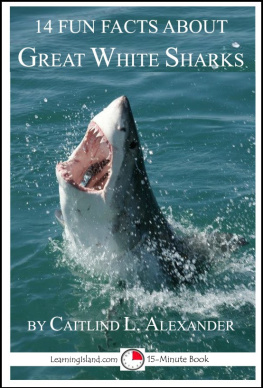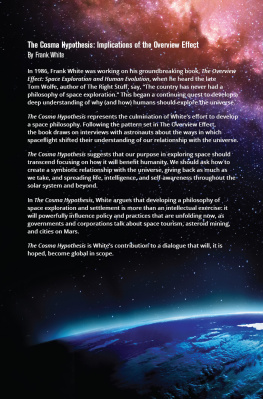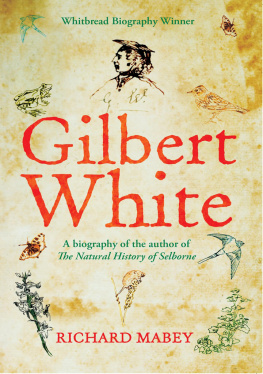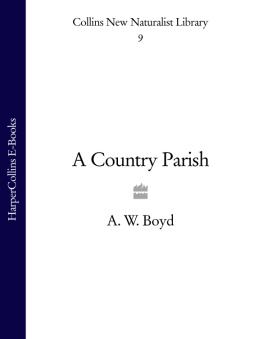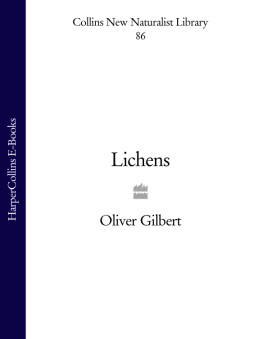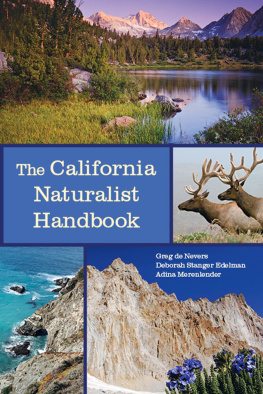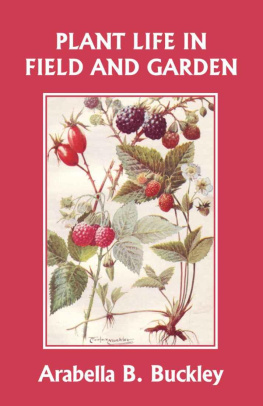First published 2003 by Ashgate Publishing
Published 2016 by Routledge
2 Park Square, Milton Park, Abingdon, Oxon OX14 4RN
711 Third Avenue, New York, NY 10017, USA
Routledge is an imprint of the Taylor & Francis Group, an informa business
Copyright Ted Dadswell 2003
The author has asserted his moral right under the Copyright, Designs and Patents Act, 1988, to be identified as the author of this work.
All rights reserved. No part of this book may be reprinted or reproduced or utilised in any form or by any electronic, mechanical, or other means, now known or hereafter invented, including photocopying and recording, or in any information storage or retrieval system, without permission in writing from the publishers.
Notice:
Product or corporate names may be trademarks or registered trademarks, and are used only for identification and explanation without intent to infringe.
British Library Cataloguing in Publication Data
Dadswell, Ted
The Selborne pioneer : Gilbert White as naturalist and scientist: a re-examination
1. White, Gilbert, 1720-1793 2. Natural history England History 18th century 3. Selborne (England)
I. Title
508.092
Library of Congress Cataloging-in-Publication Data
Dadswell, Ted, 1934-
The Selborne pioneer: Gilbert White as naturalist and scientist: a re-examination / Ted Dadswell.
p. cm.
Includes bibliographical references and index.
ISBN 0-7546-0749-6 (alk. paper)
1. White, Gilbert, 1720-1793. 2. Naturalists--England--Biography. I. Title.
QH31.W58 D34 2002
508.092--dc21
[B]
2002018205
ISBN 13: 978-0-7546-0749-6 (hbk)
The author is grateful to the publishers of the following works for permission to use extracts. Paul G. M. Foster, The Gibraltar Correspondence of Gilbert White, Notes and Queries (Oxford University Press, 1985); Humphry Primatt, The Duty of Mercy and Sin of Cruelty to Brute Animals, ed. Richard D. Ryder (Centaur Press, 1992); and R. E. Butts and J. W. Davis (eds), The Methodological Heritage of Newton (Blackwell, 1970). Also to the British Library for permission to reproduce a letter from Gilbert White to Thomas Pennant dated November 6th, 1767, and two pages from Whites Naturalists Journal for September 1789.
Gilbert White (172093) is extraordinary in a number of respects. For one thing, and although The Natural History of Selborne (1789) has been reissued regularly during the past two hundred years, we can still encounter him first by way of what might be called the Gilbert White mythology. This mythology, a combination of stories and assumptions, is often quite at variance with what White did and wrote. It represents him as naive if also well-meaning, childlike and sometimes childish.
The continuing effect of the mythology can easily be illustrated. In February 1984 the broadcaster Stefan Buczacki remarked on the air that, The old naturalist Gilbert White hated earthworms and wanted to get rid of them, unlike Charles Darwin who wrote a book in their defence. But Buczackis formulation sounded right, to the speaker himself and presumably to the other members of the Gardeners Question Time panel. He was not claiming to have studied White (sadly, for White too was an enthusiastic gardener); but if the old naturalist had said something about earthworms, it was likely to have been quaint or at any rate unsophisticated.
White was a contented man, unambitious and, more than this, a bit lazy, we are sometimes told. In old age, when he had left a letter unanswered for some months, he described himself as a procrastinator, and procrastination is often assumed to have typified him. In 1979, Selborne itself was described by a well-received author as the testament of static man. The idea of a trumpet-playing White is amusing and is perhaps not entirely foreign to aspects of Whites character but it is virtually without historical basis.
The mythology can distort facts, and, just as importantly, can obscure facts. It has sometimes been implied in the course of the last two or three decades that if Gilbert White still stands out from his contemporaries, it is as a literary figure, rather than as a naturalist and scientist. In the words of Keith Thomas, were it not for Whites special sensibilities and literary skills, we should have little reason to distinguish him today from numerous of the other amateur naturalists of his time.
White was both a gifted and an unspoilt stylist; here there need be no disagreement (almost any paragraph of Selborne bears out the point). But he was also an amateur natural historian, and one to begin to correct some of the misapprehensions with a shrewd understanding of much that the specialist and professional naturalists of his time were doing. A valuable aid to the assessment of White in his scientific role was the editing and transcription in full of his Gibraltar correspondence, in 1985. These are letters written by White to his younger brother John from 1769 to 1772 inclusive, while the latter was chaplain to the garrison at Gibraltar. Encouraged by Gilbert, John White was trying to produce a natural history of Gibraltar, and was sending miscellaneous consignments of specimens to England. In the letters, Gilbert is giving his brother advice and instruction, and is reporting on the identification and classification of the specimens which he, Gilbert, was organizing and himself contributing to. The brisk tone of the letters, and Whites well-informed approach to this supervisory work, tell their own story. The extract below is from a letter to John White dated January 25, 1771. The detail would need interpretation but it is enough to mention here that Geoffroy was the author of a new French entomology, a work replete with clear and accurate engravings, and Brisson was a French ornithologist. Scopoli as well as Linnaeus was an established naturalist and taxonomist, and John Ray was an earlier, groundbreaking authority in both these roles:
I received your kind letter of Oct: 19: & wrote you an answer on Nov: 6 The merula passer inditarius of Ray is said to be a fine songster Yr winter swallow is undoubtedly the hirundo rupestris of Scopoli: he has found out their summer residence, but you will have the merit of discovering their winter quarters. Brisson mentions a tridactyl quail from Madagascar His ornithology is extravagantly dear: 7, or 8 guineas. Geoffroy will set you right, by means of his cuts, in many genera of insects.
Now Mr Twisse is returned be sure to get his conjectures on ye currents of the streights Have you not in Spain some crown-flocks of sheep which migrate with the seasons from N: to S: get some anecdotes about them. Mr Pennant makes his artist take all yr most curious birds; & promises the drawings shall be forthcoming if wanted to engrave from. Describe the vulture percn: most minutely; & learn, if you have an opportunity, how the sexes differ. Get the skin of the Lupus aureus from Barbary, & describe it well. Scopolis new hirundo alpina is nothing, I think, but the hirundo melba; which is indeed a noble swift Write to Scopoli ask him as gravely as you can how he is sure that the woodcock, when pursued, carries off her young in her bill Scopolis leones will prob: disappoint you Geoffroys are the best I have seen. The bird you call a parus (if it be not a blackcap; I declare I am not sure) is a nondescript: if new, call it motacilla atricapilloides: Mr Pennant thinks it new. Yr purple-winged vespa is no doubt the crabroni congener &c of Ray; & if you can find that it has thorax ad latera postice utrinque dente-notatus/I shall acknowledge it to be ye sphex bidens Linn: I am sending all yr insects to Nep: Ben Wh: in town, & shall get Mr Lee of Hammersmith to inspect & ascertain them You will now be able to measure the rain of yr climate: the mean quantity of rain pr ann: in Rutland is 20 3/4 in The best foreign faunists are very barren in the manners of yir animals. What do the panorpae coae do with those enormous remiform wings? send a better specimen of the plant they haunt. But do they not still belong to the water? Get some account of the prickly heat or fever: & the exact height of yr mountain.


